Grow Limelight Hydrangea Shrubs For Green Themed Displays And Brilliant Borders
If you're a panicle hydrangea lover in search of flamboyant, long-lasting florals, knowing how to grow Limelight hydrangea shrubs will ensure gorgeous green blooms
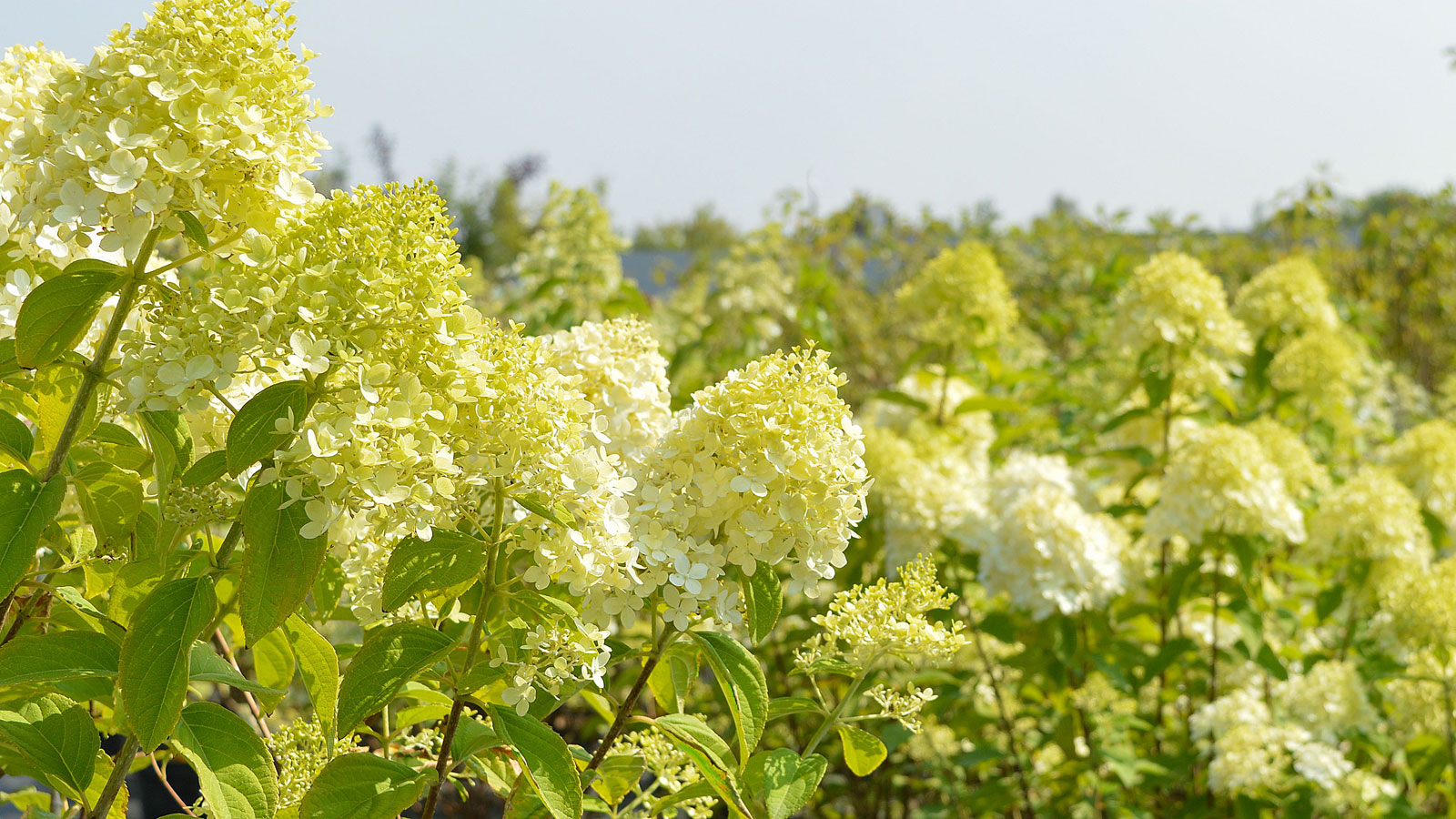

Quick Facts
Botanical name: Hydrangea paniculata
Height: Eight feet (2.4m) tall
Spread: Five feet (1.5m) wide
Sun: Bright in cold climates, indirect in warm climates
Soil: Loamy, well drained
Hardiness zones: 3-9
When to plant:
Spring or fall
Flowering time:
August-September
Panicle hydrangeas are popular in gardens for their ease of growing, cold hardiness and spectacular flowers. Being able to grow Limelight hydrangea shrubs will add character and tone to even small and subdued planting schemes, thanks to their luminous bright green to white to pink panicle blooms. For anyone who is familiar with the more conventional and common hydrangea varieties, Hydrangea paniculata ‘Limelight’ is a striking alternative with its near-neon blooms that last for months.
‘Limelight’ has won awards for its large quantity of long-blooming panicles of vibrant flowers. A Limelight hydrangea shrub is one of the most impressive panicle shrubs (aka peegee hydrangea plants) you can grow. It is capable of reaching eight feet (2.4m) tall and can be pruned as a small tree, though it does best as a shrub.
Hydrangeas make some of the most spectacular shrubs you can grow, with several available to buy at the Gardening Know How Shop. Still, ‘Limelight’ offers something out of the ordinary for the more adventurous hydrangea grower keen to cultivate the showiest blooms. This unique panicle variety is an excellent choice for a large accent or border hedge that provides flowers long after other shrubs have stopped blooming.
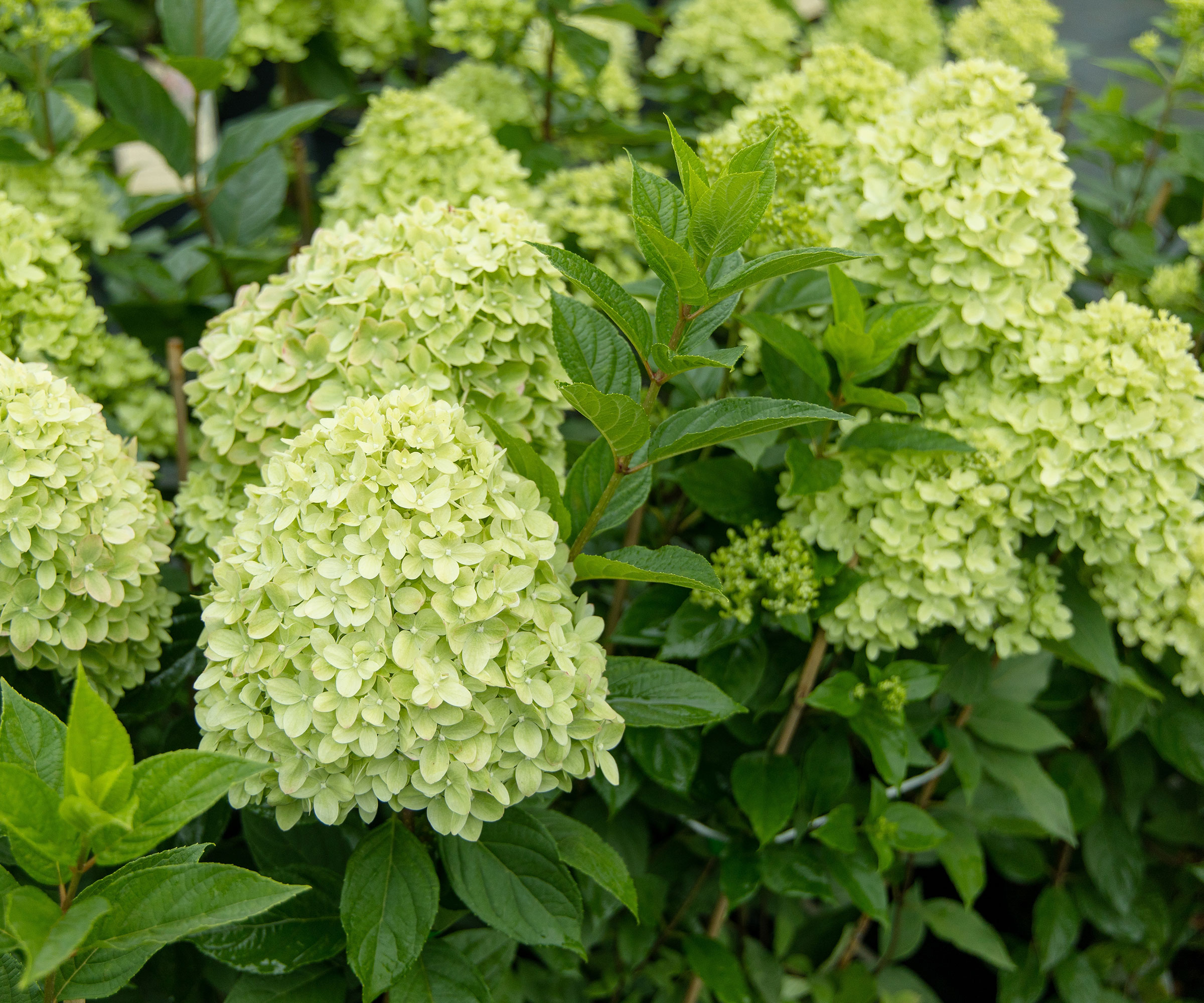
Grow this electrifying hydrangea in your yard! Shop 'Limelight' hydrangeas and more show-stopping shrubs from reputable growers in the Gardening Know How Shop.
Caring for Limelight Hydrangea Shrubs
The small bright flowers of a Limelight hydrangea shrub grow in large pointed clusters (the panicles). These dramatically colored panicles can be between six and 12 inches (15-30cm) long. They bloom white and chartreuse in July, then shift to pink and beige in fall. These flowers provide extended blooms in the garden, but are also good for cutting.
Growing on strong stems, they remain upright and do not require staking. However, to ensure the most impactful, long-lasting blooms, it helps to keep these Limelight hydrangea care tips in mind. Follow these guidelines for the most vivid displays.
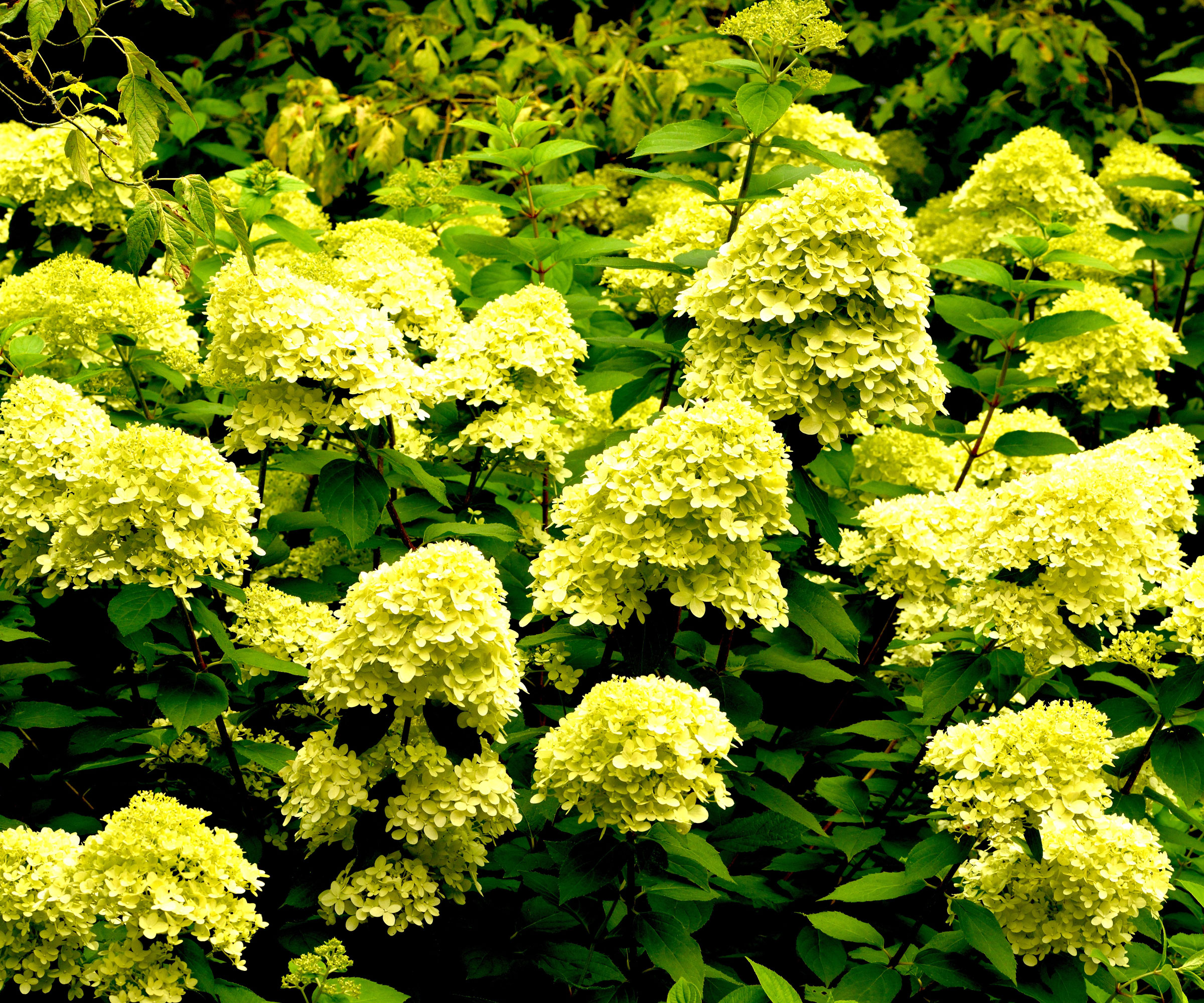
- Lighting: Full sun or light shade is best. In cooler areas, you can get away with prolonged exposure to full sunlight. In warmer areas, a few hours of afternoon shade are recommended.
- Temperature & Humidity: Once established, Limelight hydrangeas are drought tolerant. If you want the most reliable hydrangeas by zone, Limelight grows well in USDA zones 3-9, so it can tolerate a variety of climates and is cold hardy.
- Watering: Water immediately after planting. Once established, you only need to water often enough to prevent the earth drying out. The root system is shallow, so provide a couple of inches of mulch to protect it and hold in moisture.
- Fertilizing: Limelight hydrangeas appreciate a balanced, slow-release fertilizer in early spring. You should only need to feed these shrubs once a year, early in the growing season.
- Soil & Compost: Unlike bigleaf hydrangeas, the color of the flowers on a Limelight hydrangea doesn’t vary according to the soil pH. These are easy-to-grow hydrangeas and adaptable to different conditions. Still, panicles do best in loamy soil with steady moisture.
- Pests & Diseases: You should find that common hydrangea diseases and pests are unlikely. You might see aphids or mites or signs of leaf spot, rust, mildew or bacterial wilt. Other possible issues will be capsid bug in spring, and hydrangea scale in early summer. A bigger potential problem is damage from deer which feed on the plants.
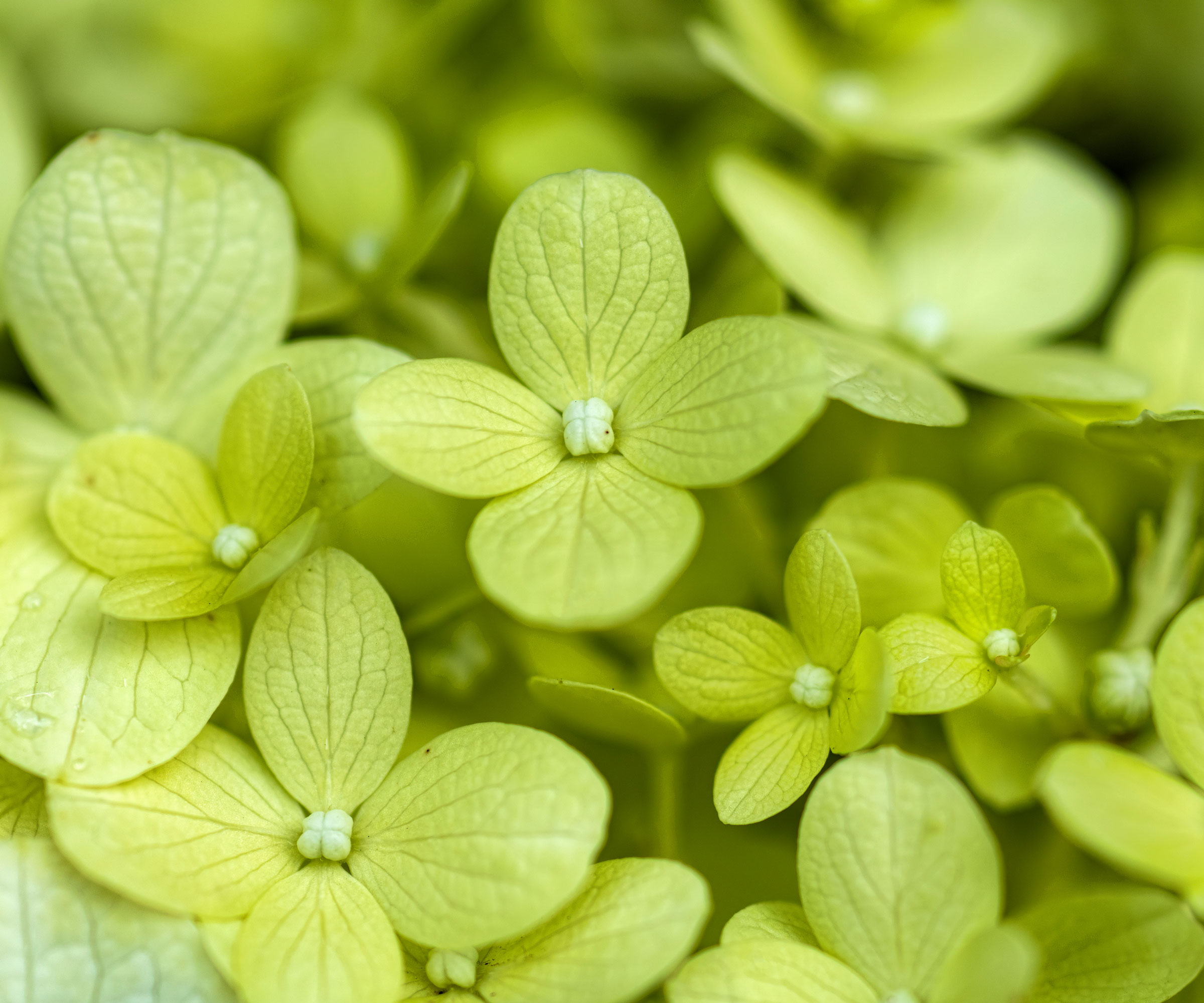
Landscaping with Limelight Hydrangea
Limelight (and other panicle) hydrangeas can fill several roles in the garden, but keep in mind that they are designed to be grown as shrubs or small trees. Ideally, they need plenty of room to grow. Because of the potential size, when landscaping with Limelight hydrangea, many gardeners use it as an accent or specimen plant.
You can use Limelight as a large hedge or mass planting if you are interested in landscaping shrubs on a bigger scale and have plenty of space for this type of planting. It will add strong visual interest to an open woodland garden. For a smaller but similar variety that grows about half as big, try ‘Little Lime’ hydrangea, which can be grown in a container.
Pruning Limelight Hydrangeas
Panicle hydrangeas produce blooms on new growth, so the best time to prune the shrubs is in late winter or early spring. Pruning Limelight hydrangea plants just after the blooms have faded in late fall can trigger new growth that might freeze during the winter.
Gardening tips, videos, info and more delivered right to your inbox!
Sign up for the Gardening Know How newsletter today and receive a free copy of our e-book "How to Grow Delicious Tomatoes".
Limelight panicle hydrangea is pretty low maintenance as shrubs go. Just give it a light trim to remove crossed branches and give it a better shape. If you prefer, you can cut it back by between a third and a half to promote a fuller structure and more pleasing shape. When you prune these hydrangea bushes, you will find this also gives you more flowers in the following season.
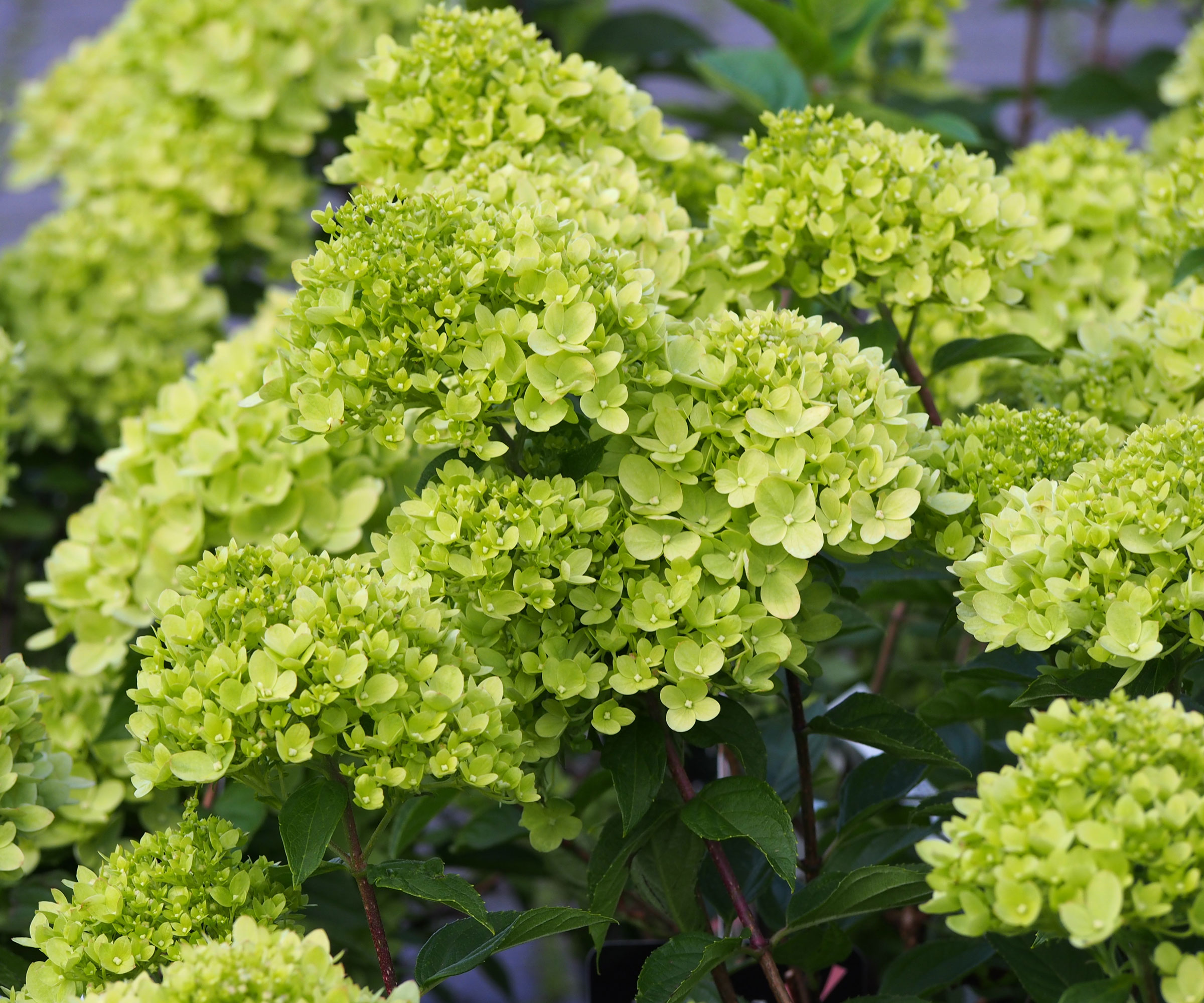
Frequently Asked Questions
What are some of the best green hydrangeas?
‘Limelight’ is one of the most impactful green hydrangeas you can grow. However, there are others. Quite a few of the most vibrant are also the most compact. Small green varieties include ‘Magical Green Cloud’, ‘Invincibelle Sublime’, ‘Invincebelle Limetta’ and dwarf hydrangea breeds like ‘Little Lime’, which both reach a few feet in height. Certain varieties, such as ‘Pistachio’ are predominantly green but include rose-pink floral details (becoming more pronounced as the flower heads age).
Does soil pH affect the color of Limelight hydrangeas?
This hydrangea variety is adaptable to a lot of soil types. However, unlike certain hydrangea types, soil pH does not affect the blooming potential of Limelight. Irrespective of whether or not the underlying soil is acidic, you should see lime green and white flowers emerge in midsummer, fading to cream as they mature and eventually pink-green and rose pink in the fall.
How do you propagate Limelight hydrangeas?
You can grow these hydrangeas successfully from softwood cuttings or hardwood cuttings. For the most effective hydrangea propagation, hardwood cuttings are best started during winter, while softwood cuttings should be started in early summer.
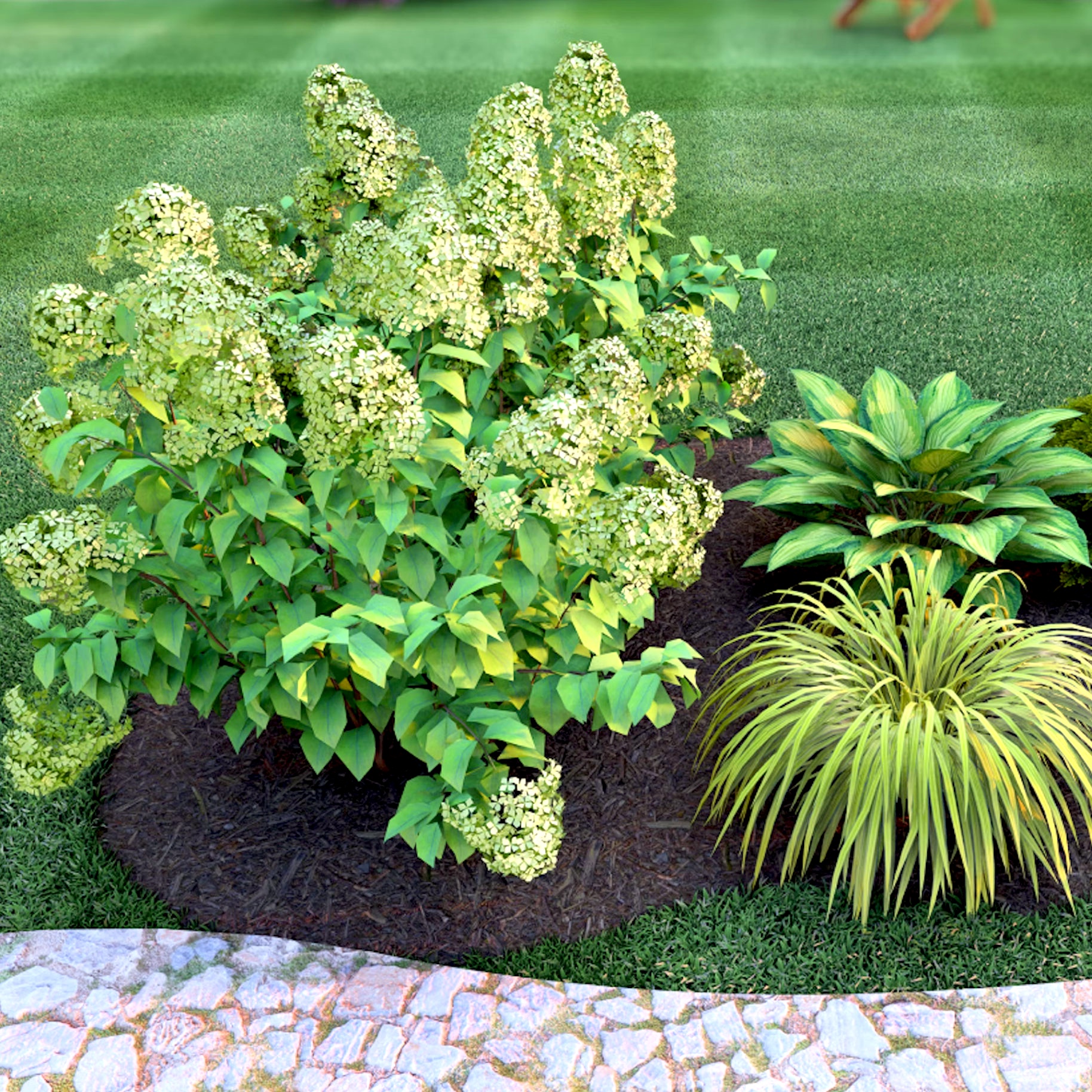
Keen to go green on a grand scale? This kit from Plant by Number has all you need to grow a 'Limelight' hydrangea with coral bells, cypress, hostas & sedums.
More Ideas for Joyful Blooming Shrubs!
- Longing for showy blooms to brighten up beds and borders with color for every season? Read our roundup of the best flowering bushes for multi-season delights.
- Daring to max up your flowering options? If it’s giant florals you’re after then our guide to plants with big flowers can inspire you to grow some giant beauties.
- Looking for high-impact plants and shrubs that can amp up your curb appeal? Find out about some of the most dynamic shrubs to grow in front lawns and front yards.
- For brilliant gardening themes, you can’t get brighter than white – and in this guide to the best white flowers, we round up the brightest florals you can grow.
- Ever wondered if you can grow a hydrangea as a houseplant? Wonder no more, as this insight into growing hydrangeas indoors addresses the issue once and for all!
This article features products available from third party vendors on the Gardening Know How Shop.

Mary Ellen Ellis has been gardening for over 20 years. With degrees in Chemistry and Biology, Mary Ellen's specialties are flowers, native plants, and herbs.
- Amy DraissDigital Community Manager
- Janey GouldingContent Editor